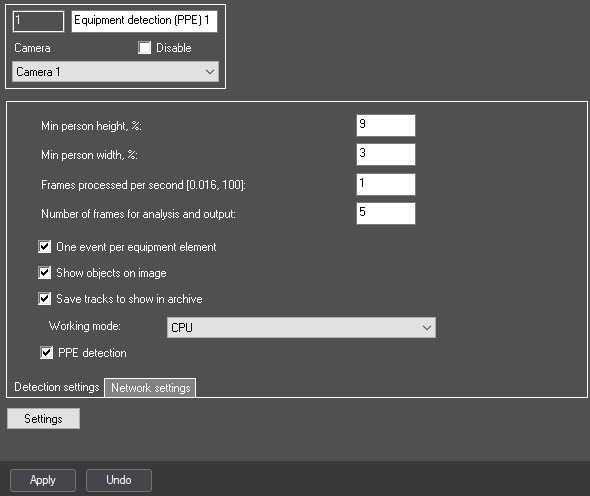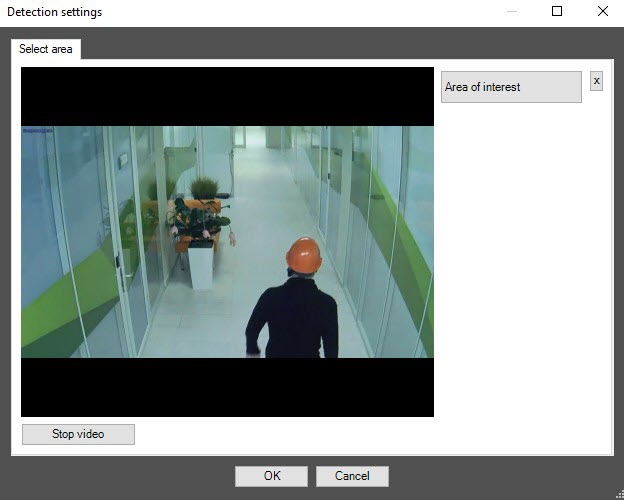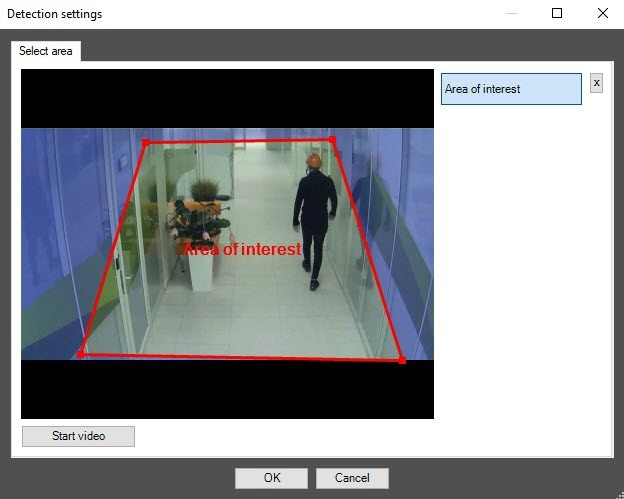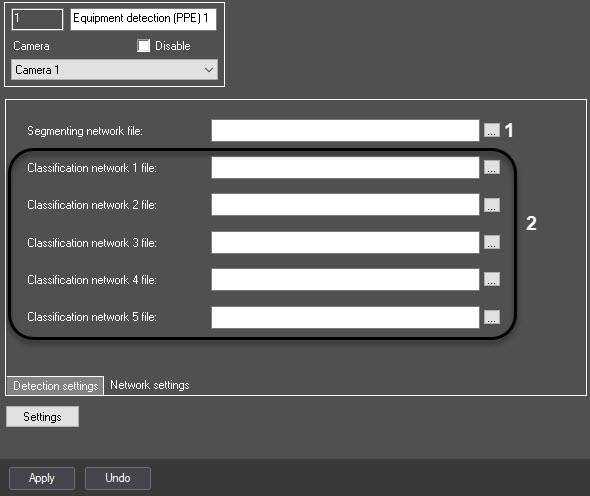Go to documentation repository
Documentation for DetectorPack PSIM 1.0.1.
Configuration of the Equipment detection (PPE) module includes: general settings of the detection tool, selection of the area of interest, configuration of the neural networks.
The Equipment detection (PPE) module is configured on the settings panel of the Equipment detection (PPE) object created on the basis of the Camera object on the Hardware tab of the System settings dialog window.
General settings of the detection tool
General configuration of the detection tool is performed on the Detection settings tab on the settings panel of the Equipment detection (PPE) object.
- In the Min person height, % and Min person width, % fields, enter the minimum height and width of a person in the frame as a percentage of the frame height/width. Objects smaller than the specified size will not be detected.
- In the Frames processed per second [0.016, 100] field, set the number of frames per second that will be processed by the detection tool.
In the Number of frames for analysis and output field, enter the minimum number of frames on which a violation must be detected in order to generate a trigger. The value must be in the range [2; 20].
By default, the One event per equipment element checkbox is set, and the detection tool triggers once for each equipment element violation within an object (track). If you want the detection tool to trigger each time an equipment violation occurs, clear the checkbox.
Note
Example. A person appeared in the frame without a helmet, then put it on and then took it off again. If the One event per equipment element checkbox is set, then there will be one trigger, if not—two triggers.
- Set the Show objects on image checkbox if it is necessary to highlight the detected object with a frame on the image in the Monitor interface object window.
Set the Save tracks to show in archive checkbox to save the object (track) to the archive.
Note
The frame on the image of the detected object is saved in the Monitor object archive.
From the Working mode drop-down list, select the device on which the neural network will operate: CPU, one of NVIDIA GPUs or one of Intel GPUs. The default value is CPU. Depending on the device that you select, the neural networks will be selected.
Attention!
- It may take several minutes to launch the algorithm on NVIDIA GPU after you apply the settings. You can use caching to speed up future launches (see Optimizing the operation of neural analytics on GPU in Windows OS).
- If you specify other processing resource than the CPU, this device will carry the most of computing load. However, the CPU will also be used to run the detection tool.
- Set the PPE detection checkbox to detect the presence of personal protective equipment (PPE). By default, the checkbox is clear.
Selecting the area of interest
Click the Settings button. The Detection settings window will open.
- Click the Stop video button to pause playback and capture a frame of the video image.
- Click the Area of interest button to specify the area of detection. The button will be highlighted in blue.
- On the captured video frame, sequentially set the anchor points of the area in which the objects will be detected by left-clicking the mouse button. The rest of the frame will be faded. If you don't specify the area of interest, the entire frame is analyzed.There can be only one area of interest.
Note
- You can add only one area. If you try to add a second area, the first area will be deleted.
- To delete the area, click the button to the right of the Area of interest button.
- Click the OK button to close the Detection settings window and return to the settings panel of the detection tool.
Configuring neural networks
- Go to the Network settings tab on the settings panel of the detection tool.
- By default, the standard (default) segmenting neural network is initialized according to the device selected in the Working mode drop-down list. The standard neural networks for different processor types are selected automatically. If you use a custom segmenting neural network, click the button (1) to the right of the Segmenting network file field, and in the standard Windows Explorer window, specify the path to the file.
- By default, two standard classification neural networks are initialized: classification neural network (PPE on the head) and classification neural network (PPE on the body) according to the selected processing device in the Working mode drop-down list. Each classification neural network detects equipment on a specific body segment. The standard classification neural networks for different processor types are selected automatically. If you want to detect only one item of equipment, click the button to the right of the Classification network file field (2), and in the standard Windows Explorer window, specify the path to the custom neural network file. If there are several custom neural network files, specify the path to each.
- Click the Apply button to save the settings.
The Equipment detection (PPE) module is now configured.





